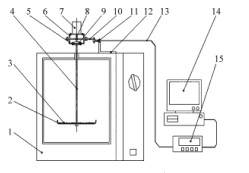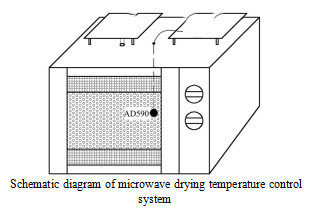
- Shandong Microwave Machinery Co.,Ltd.
- To be the Leader of microwave drying and edible oil refining equipments Manufacturer
Home> Company News> Effect of Different Drying Processes on the Content of Bioactive Components in Winter Melon
- AddressNo. 225, Huangqiao Village, Beiyuan, Tianqiao District, Jinan, Shandong, China
- Factory AddressNo. 225, Huangqiao Village, Beiyuan, Tianqiao District, Jinan, Shandong, China
- Phone(Working Time)+86 0531 85064681
- Phone(Nonworking Time)0086-15020017267
- Fax+ 86 0531 85064682
Effect of Different Drying Processes on the Content of Bioactive Components in Winter Melon
2018-11-15 14:11:06

Abstract: In order to study the effects of three drying processes at room temperature drying, oven drying and microwave drying equipment on the active ingredients of winter melon skin, the water loss rate of melon skin after drying by different processes was studied, and the polysaccharide in winter melon skin was detected by spectrophotometer. , flavonoids, polyphenols, chlorophyll a, chlorophyll b, total chlorophyll content; after comparison, the water loss rate of winter melon skin after microwave drying is higher than normal temperature drying and oven drying;
The content of polysaccharide in melon skin was the highest in oven at 60 °C, and the content of flavonoids in melon skin was the highest at room temperature. The content of polyphenols in melon skin was the highest at 105 °C in the oven, and in melon skin at room temperature and oven at 60 °C. The chlorophyll content is the highest. Among the three drying methods, the best retention effect on the active ingredients in winter melon skin was drying in an oven at 60 °C.
Key words: drying process; melon skin microwave drying; bioactive ingredients
Winter melon skin is the dry outer skin of melon, which is irregular fragments, often curled inward or cylindrical, and varies in size. The outer surface is grayish green, or has a white frost, and the inner surface is rough, and the vascular bundle of vascular veins is visible. Light and brittle, easy to break, light taste.
The winter melon originated in China and East India. It is widely distributed in the temperate, subtropical and tropical regions of Asia. The production is high. The main producing areas in China are located in Guangdong, Anhui, Sichuan, Hebei and other provinces. The planting area is 200,000 hectares. Common vegetables. Winter melons in most areas are still dominated by fresh produce. Plant polysaccharides have shown excellent effects in lowering blood pressure, lowering blood fat, regulating immune function, anti-aging, and treating diabetes.
Flavonoids can effectively prevent osteoporosis, treat diabetes, especially in anti-tumor, and can effectively inhibit the growth of tumor cells. Polyphenolic compounds play an important role in food processing and are an important food additive. They have antioxidant effects, can remove a small amount of oxygen and free radicals in food, and can block the further oxidation reaction. It also has a certain health care function, and it plays a significant role in anti-cancer and antibacterial effects. Chlorophyll mainly contains chlorophyll a and chlorophyll b, while some lower plants also contain chlorophyll c and chlorophyll d.
Chlorophyll has many uses such as hematopoiesis, vitamin supply, detoxification, and disease resistance. Winter melon is a good product with good quality and low price, both medicine and food. It is favored by consumers. At present, the research and development of winter melon at home and abroad is limited to melon meat and winter melon juice. Little research on winter melon skin is due to Chinese national food. Cooking and processing habits, winter melon skin will be removed before cooking, and will eventually be discarded in the form of kitchen waste, which will not only cause pollution and waste, but also greatly reduce the comprehensive utilization value of melon.
In this paper, the effects of drying at room temperature, oven drying and microwave drying on the content of total chlorophyll, chlorophyll a, chlorophyll b, polysaccharide, flavonoids and polyphenols in winter melon skin activity were studied, which provided a certain theory for the development and utilization of winter melon skin. basis.
 High efficiency food beverage factory stone paper production line
High efficiency food beverage factory stone paper production line Factory price Fully automatic Machine PP/PS Plastic Sheet Production Line
Factory price Fully automatic Machine PP/PS Plastic Sheet Production Line used deformered bar rolling mill production line
used deformered bar rolling mill production line Manufacturing plant automatic factory puffed sticky rice cracker production line
Manufacturing plant automatic factory puffed sticky rice cracker production line Production Line Pp Ppr Plastic Pipe Making Machine 20-63mm Multi-layer Extrusion Production Line For Water Supply
Production Line Pp Ppr Plastic Pipe Making Machine 20-63mm Multi-layer Extrusion Production Line For Water Supply